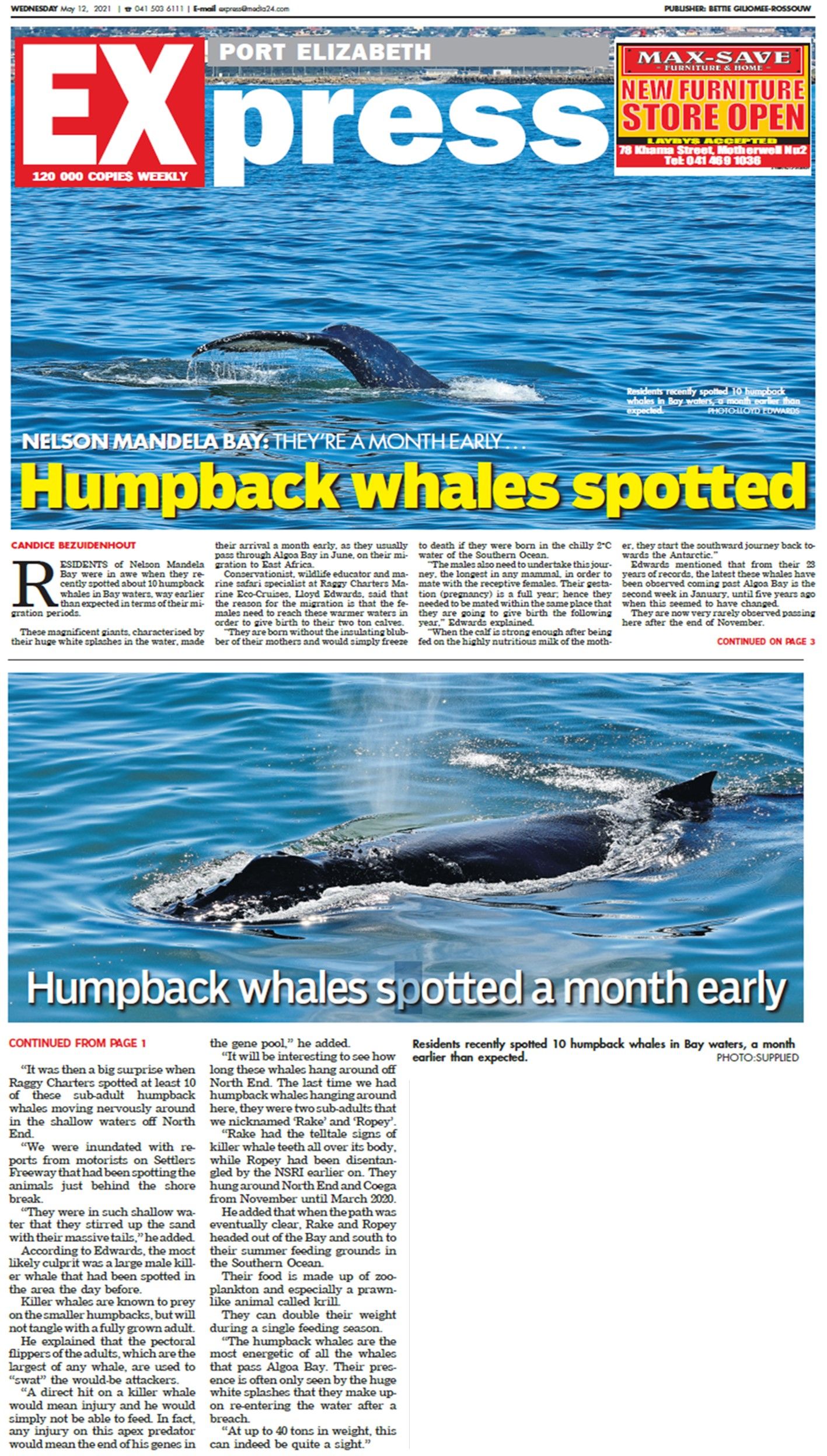Sub-Adult Whales in Algoa Bay
By Lloyd Edwards
Friday, 14th May 2021Sub-adult Humpback whales in Algoa Bay.
As per our previous post, we have had 10 humpback sub-adults holed up in the shallow water off North End, Port Elizabeth, probably forced there by marauding killer whales. We had three sightings of orcas in a week prior to this and on the first day they were spotted here. Jake and I took out some tour operators, scientists and members of the PE cetacean spotters group to get a closer look. My goodness, we never expected what was awaiting us! Probably the best display I have ever seen in my 23 years with Raggy Charters. The same animal breached at least 50 times in a row . . . definitely a record for us! I also managed to get the shot that has been evading me all these years . . . a humpback completely out of the water! See the attached photos which were taken in a continuous burst of my trusty Nikon.

At last after 23 years of trying . . . a humpback completely out of the water. I was once given a photo by Professor Margaret Smith (of coelacanth fame) when I was at Rhodes University in the 80's of something similar. I vowed to take this photo one day! Nikon D810, ISO 200, 160mm zoom, f/8 and 1/1600th second.
According to whale expert, Professor Ken Findlay, the smaller humpback whales seen along our coast are sub adults that do not undertake the full migration. We have found exactly the same in Algoa Bay. In winter it is extremely cold in the Sub-Antarctic and no feeding can be undertaken by the whales. For this reason, they swim to the warmer waters of the Southern African coast where at least some feeding can be done. Stranded sub adult humpbacks have been found with mantis shrimps in their stomachs. My son Jamie also observed humpbacks feeding on bait fish off Humewood beach, Port Elizabeth. Feeding on krill has been observed in False Bay in the Western Cape.
The super pods that have been observed off our West Coast are a case in point. These animals, which number in their hundreds, only contain immature animals and no calves. All the larger males, pregnant and receptive females have headed to the warmer waters off West Africa (Gabon) and East Africa (Kenya and the islands). It would be pointless for these animals to undertake such a long migration when there were no benefits or reason in doing so.
At the beginning of the Northern migration, animals are seen to be covered in yellow skin diatoms. When these animals venture up the West and East Coasts and into the tropics, these diatoms fall off. Other skin parasites like the Panella copepod and barnacles also succumb to the warm water and fall off, leaving the telltale scars.
The animals that make up the super pods in October and November are likewise covered in these yellow diatoms, which mean that they have not undertaken the journey further North.
Historically, the whalers also proved this to be true. According to whaling records from the Durban whaling station, in August only small animals were taken. The larger animals of both species had already past Durban and were in Mozambique or further North.
The same holds true for humpback whales off the south and south east coasts of Australia. These are also much smaller animals that do not undertake the full migration.
Just another story about why Algoa Bay rightfully deserves the title of the “Greatest Marine Wilderness in Africa”.
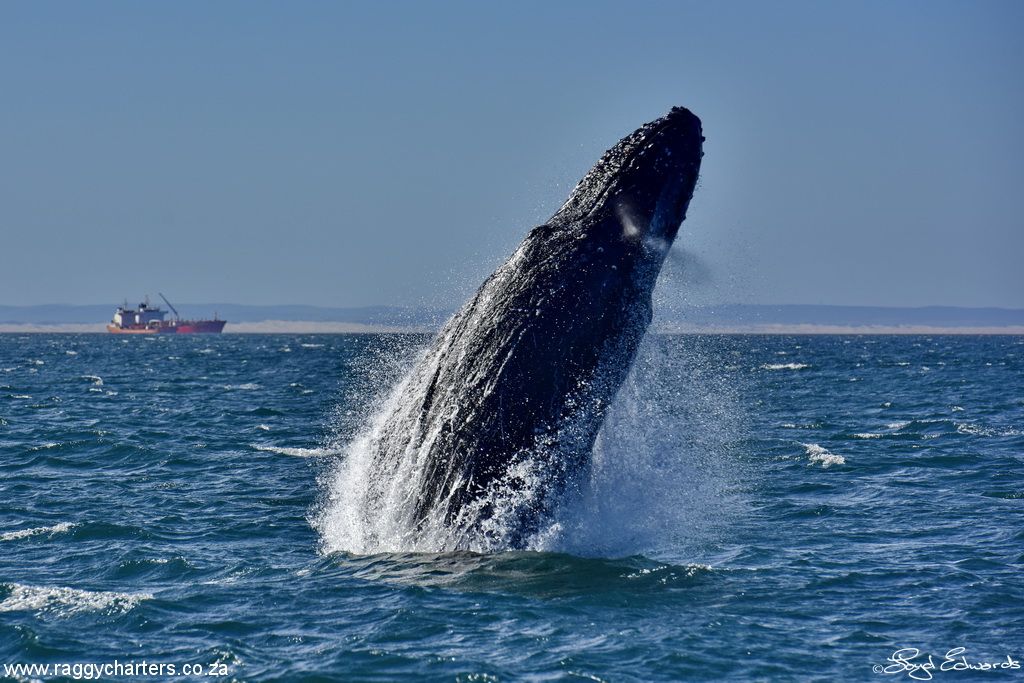
The start of the sequence of 10 images. What makes this even more impressive is that the water is very shallow here.

Up she goes. You can still see the blow on the right of the animal.

The head is at it's maximum height, gravity is now starting to play a role.

The extremely long flippers come out, probably as a stabilizing action.
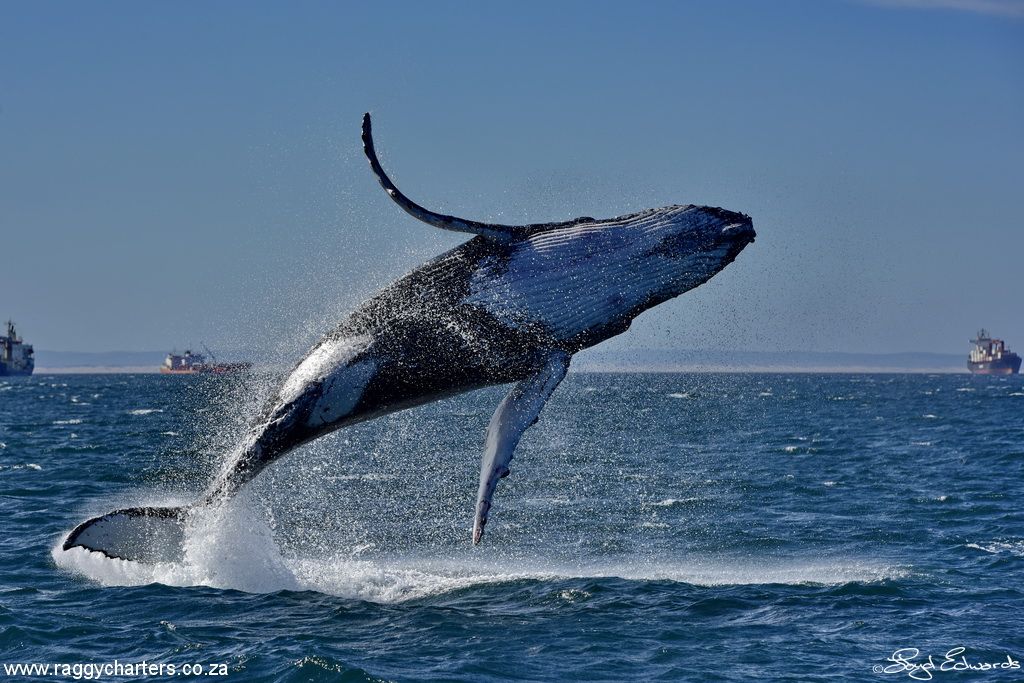
Like a high jumper whose body has cleared the bar, now for the legs, or in this case, tail!

Almost there. I was wondering if it would get the last of the tail out.

And here we go, the dream image! After I had taken some images I gave Jake a turn on the camera. When he was done I asked for one more try and this is what happened. It was also the whale's last breach of 50 in a row

The reentry. Large whales make a huge splash as you can imagine!
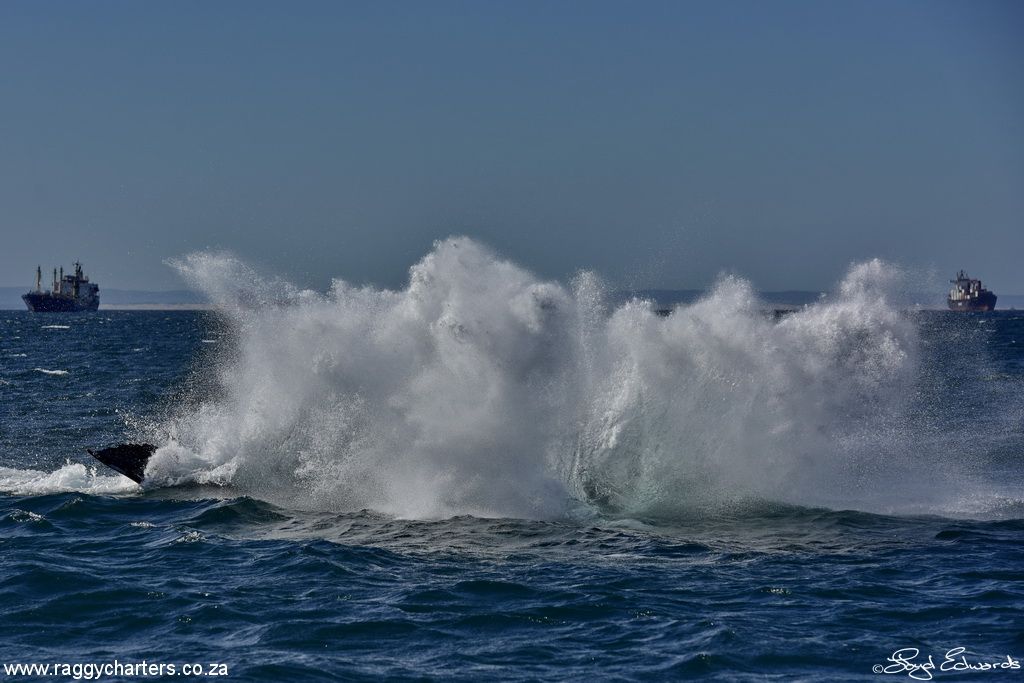
The foamy water keeps on rising
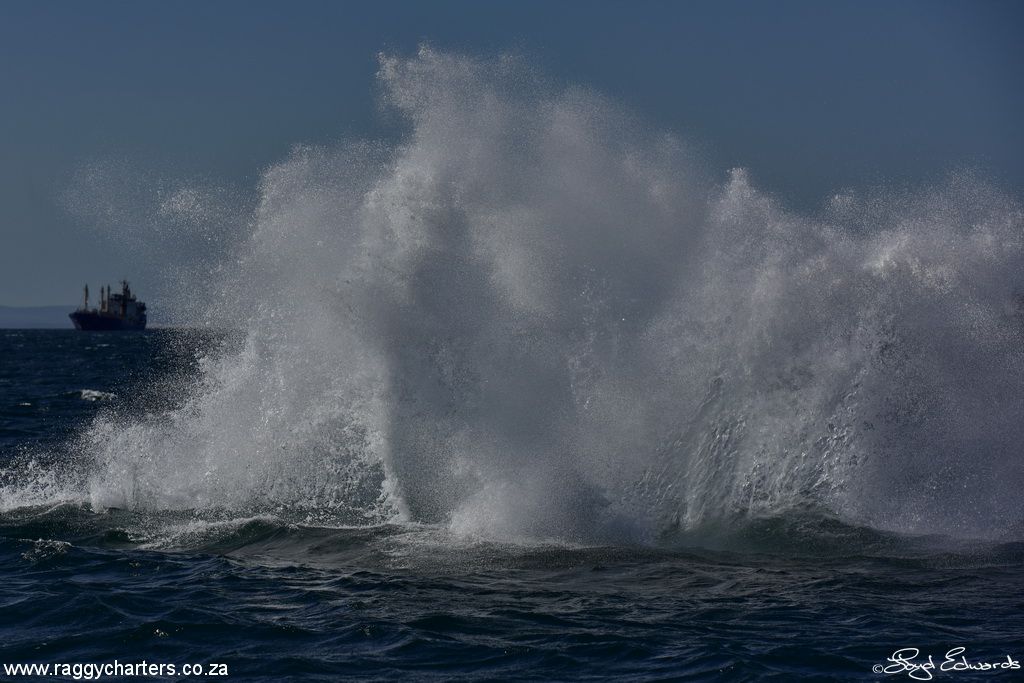
The zenith of the reentry splash!
Jake, with a little help from the creative SST team, brings the breach to life!
& Karen's creation: breach_sequence.mp4

Raggy Charters news in the media
